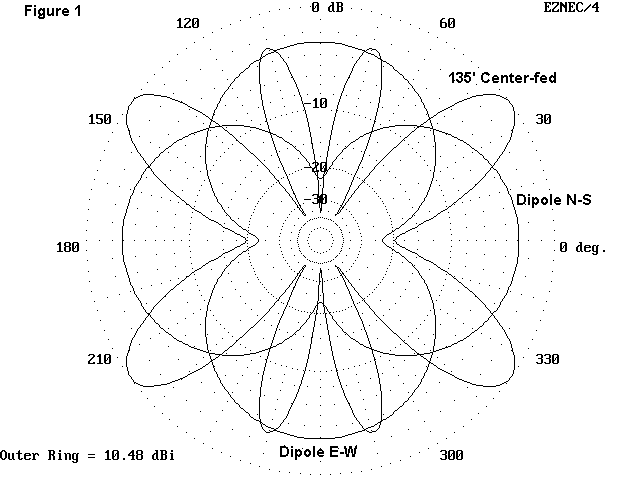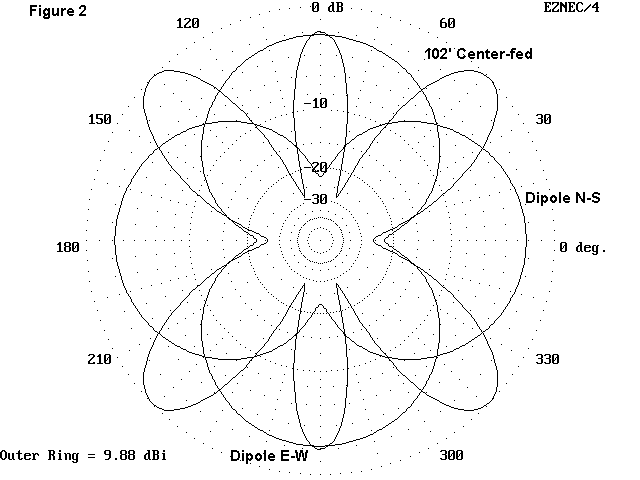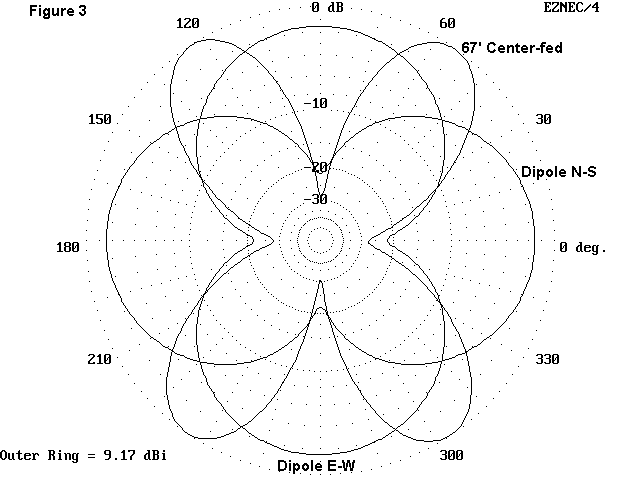 No. 12 Multiband vs. 10-Meter Dipoles
No. 12 Multiband vs. 10-Meter Dipoles
If we had unlimited money and space, we could ask the following question sensibly: What is the best 10-meter antenna? The answer might be about 4 stacked long-boom, many-element Yagis from about 70' on up on a rotatable tower on a one-hill island surrounded by ocean. Even that answer might get an argument. However, for most of us, the simple question of what the best 10-meter antenna might be is an exercise in irrelevancy.
A more sensible question is usually this one: which of two alternatives is the better antenna? Each alternative might fit our yard and bank account. However, no general answer is possible. Even if one antenna does outperform another, there are always a number of other factors that affect the final decision. Can I maintain this antenna? What will my neighbors say when they see it? Is it compatible with the rose garden?
With those qualifications in mind, let's compare two antennas on performance alone just because people have asked a certain question: which is better: a multiband wire antenna like a G5RV or a center-fed Zepp on the one hand, or a dipole cut for 10 meters on the other hand? And let's presume you have the room and supports for both antennas to make this a real comparison.
If you like to work all of the HF ham bands and are limited to a single antenna, then the multiband wire is certainly an antenna to consider. An "80-meter" 135' center-fed Zepp, a G5RV 102' dipole, and a "40-meter" 67' center-fed Zepp are all long doublets, center-fed with parallel transmission lines and differ only in length. All require an antenna tuner, although some antennas show a low impedance on some bands. The 135' Zepp obviously works better on 80, although the 102' center-fed antenna does quite well there, and all three antennas can show respectable performance from 40-10.
In fact, some folks praise these longer antennas because they show some gain over a 10-meter dipole on 10-10's favorite band. Unfortunately, that kind of claim is like preferring $10 bills over $5 dollar bills. I'll take the $5s if you give me enough more of them than the $10s. The bill size is not relevant until you know how many of each are at stake.
When comparing any of the longer multiband wires with a 10-meter dipole, the extra gain is not relevant until we answer the question of where it goes and, equally, where it does not go. A lot of variables go into the answer to the "where" question, but we can give a glimpse into the answer with Figures 1, 2, and 3. Each shows the azimuth pattern of 3 antennas (2 dipoles and one multiband antenna) modeled at a height of 35' (a typical amateur backyard installation) over real ground at a 14-degree angle of maximum radiation at 28.5 MHz.
Think of these patterns as looking down on the antenna from overhead. The dipoles are the simple figure-8 double loops. For the loops reaching out to 0 and 180 degrees, the antenna runs up and down the page through the center of the diagram. For the loops reaching maximum at the top and bottom of the diagram, the antenna runs left and right across the page. Each multiband antenna also runs left and right across the page.

Figure 1 shows the 135' Zepp. It has four lobes that exceed the dipole limit by a good bit. However, notice how narrow they are. Notice also the nulls in the pattern. with some careful planning and some good luck in where your yard trees go, you might align the antenna so that one or more of the lobes points right where you find the stations you like to work most. Then again, you might end up aligning the antenna so that nulls point at your second and third favorite spots.

Figure 2 shows the dipoles with a G5RV. Again, there are higher-gain narrow lobes, but aimed more at the 45-degree point on the pattern. The shorter antenna creates fewer lobes. Again, you might use this information to hit one or more of your targets, and possibly miss a few desirable targets.

Figure 3 shows the same data for the 67' Zepp, about the length of a 40-meter dipole. There are only 4 lobes for this shorter antenna, but, of course, 4 nulls as well.
Each of these antennas has its place in some ham's yard, especially for working the lower HF bands (and each antenna will show a different pattern on each band). But is any really significantly better than a dipole on 10 meters? Gain is nice, but those nulls can drive you crazy.
Well, the dipole also has nulls off each side, so it too is limited. However, with an overall length of between 16' and 16.5' (depending on the element diameter), it is not too difficult to put up a rotatable dipole. You can hand-rotate the antenna mast or use a TV rotator. Then the nulls disappear. More correctly, they go where you put them, as you broadside the antenna to the desired signal. Hence, you only have to rotate a dipole less than 180 degrees to get full 360-degree coverage.
A stack of TV masting with a house clamp only roughly tight or guys in guy rings would permit you to hand turn the mast. You can attach a short level rod to the mast to make turning easier. Except in odd late afternoon shorter skip conditions, where signals seem to come from every direction, you will likely only have to change the antenna's orientation every few hours.
Am I "pushing" the rotatable dipole? Not really. Part of my point is
that gain is not everything, especially if it does not point anywhere
useful. Part of my point is that pointing is more simply done on 10 meters
than many people believe, especially if they only look at monster 20-meter
beams. Part of my point is that a multiband wire antenna is a very useful
antenna for working all the bands. And part of my point is that, with a
little ingenuity, a 10-meter dipole can do a lot of useful work for us
without being unduly noticeable or expensive. Even if you already have
that long wire, you might also consider adding a rotatable dipole to the
antenna "farm." Now, if it is simple enough, you might even take it apart,
toss it in the truck or trunk, and go portable with it--and put it back up
when you get home.
Updated 3-17-97. © L. B. Cebik, W4RNL. Data may be used for personal purposes, but may not be reproduced for publication in print or any other medium without permission of the author.